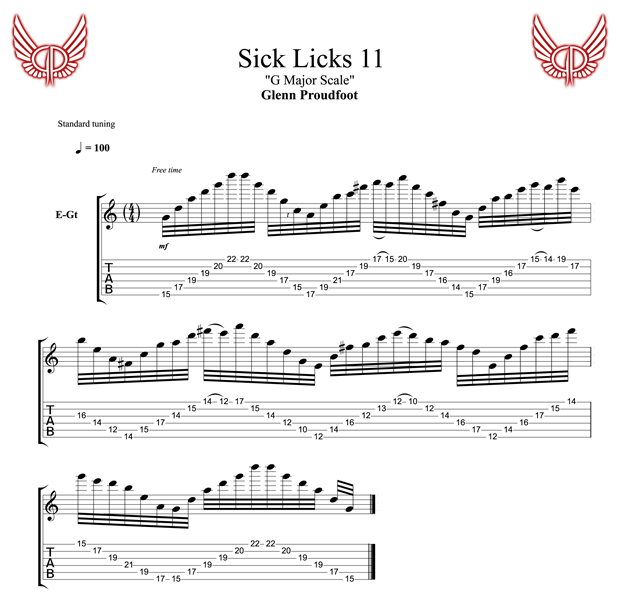Sick Licks: Practice Playing Intricate Patterns Up and Down the Neck

In this Sick Lick, I'm using the G major scale.
It was because of my experimenting with major scales and modes that I originally came up with the “Thumb Technique”; I was searching for ways to play descending arpeggio patterns while keeping an even flow and rhythm. What I eventually came up with is the pattern played in this lick.
Whenever I'm searching for a new sound or lick, I look for something I can apply all over the neck and scale (once I've discovered the pattern), then I practice it by playing it all the way down the scale -- or all the way up.
Basically, in this lick is I'm starting in the highest-possible position, then moving the pattern down. Obviously the shapes and notes change but the principle or mechanics of the lick remain unchanged.
I find this is the best way to nail a new technique. You practice and play it all over the neck and create exercises and runs and start applying them in all positions.
As these licks are very complex, I find the best way to approach them is in sections. Here's an example of how I would break this down to practice it:
Part 1: The set-up of the lick, which is the first six notes. An arpeggio starting on the low E ascending to the high E, one note per string.
Get The Pick Newsletter
All the latest guitar news, interviews, lessons, reviews, deals and more, direct to your inbox!
Part 2: The five-string descending arpeggio with the fifth note being fretted with our left thumb on top of the fretboard.
Part 3: Another six-string arpeggio moving down the neck. It has the last note of that arpeggio being fretted with our first finger pulling off to a descending note that is, once again, fretted with our left thumb on top of the fretboard. So there are seven notes in total in this section.
From here all I do is rotate parts 2 and 3 down the neck.
I tend to do this with a lot of the licks I create. As there can be a lot to take in, I find it easier if I break them down and focus in on the individual parts. This is also a great way to practice them because it enables you to build speed and accuracy more proficiently in these areas of the lick. Obviously, once you have mastered every individual part, you can then work on putting them together.
You should apply this kind of approach to all kinds of areas of your playing. I find that a lot of the time guitarists get overwhelmed with runs or the speed of some licks, but, like anything, when you start to break it down it becomes easier.
If you break down even the most complex of runs, you'll be left with a single note! This is the way I practiced as a young kid, the harder something was the more I broke it down -- until I could play it, even if that meant I could only play the first two or three notes. This is what I would do and just keep building from there.
It's things like this that will make you great! Thanks and enjoy!

Australia's Glenn Proudfoot has played and toured with major signed bands and artists in Europe and Australia, including progressive rockers Prazsky Vyber. Glenn released his first instrumental solo album, Lick Em, in 2010. It is available on iTunes and at glennproudfoot.com. Glenn was featured in the October 2010 issue of Guitar World and now creates "Betcha Can’t Play This" segments and lessons for GW. Glenn also has a monthly GW column, "Loud & Proud," which offers insight into his style and approach to the guitar. Glenn is working on a project with Ezekiel Ox (ex Mammal) and Lucius Borich (Cog), which is managed by Ted Gardner, ex-Tool and Jane's Addiction manager. The band has done pre-production on 22 tracks and is set to hit the studio and finish their first studio album. The album is set for release in 2012. Glenn also is working on the followup to his debut album; it, too, will be released in 2012.









